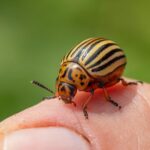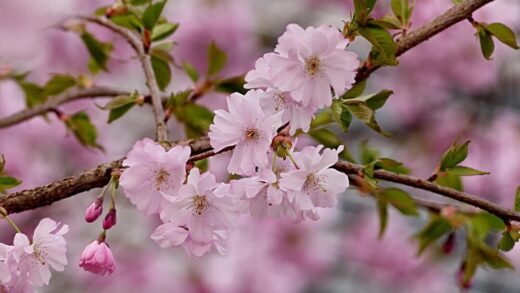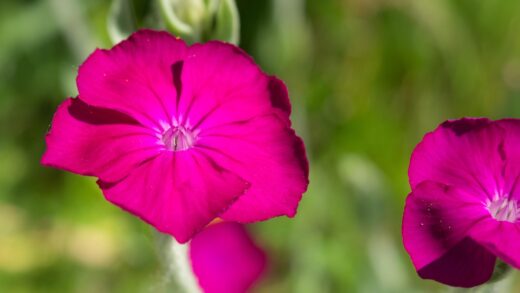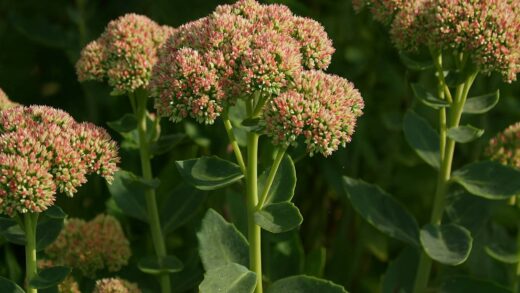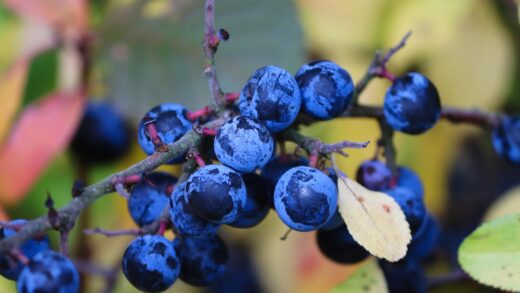Despite its reputation as a tough and resilient plant, lantana is not entirely immune to the challenges posed by various diseases and pests. While it is generally less susceptible to problems than many other ornamental plants, certain issues can arise, particularly when the plant is stressed or growing in less-than-ideal conditions. Proactive monitoring and good cultural practices are the cornerstones of effective pest and disease management. By providing your lantana with its preferred environment of full sun, excellent drainage, and good air circulation, you are already building a strong defense against most potential afflictions, creating a healthy plant that is naturally more resistant to attack.
The most common adversaries for lantana are sap-sucking insects like lace bugs, aphids, and whiteflies, which feed on the plant’s fluids and can cause cosmetic damage to the foliage. Fungal diseases, such as powdery mildew and sooty mold, can also appear, especially in humid climates or in densely planted areas with poor airflow. Recognizing the early signs of these problems is crucial for timely intervention, preventing a minor issue from escalating into a significant infestation or infection that could compromise the plant’s health and aesthetic appeal.
Fortunately, managing most of lantana’s common pests and diseases does not require the use of harsh chemical treatments. Integrated Pest Management (IPM) strategies, which prioritize cultural and biological controls, are often highly effective. Simple actions like spraying pests off with a strong jet of water, encouraging beneficial predatory insects in your garden, and pruning to improve air circulation can resolve many issues before they become severe. When treatments are necessary, organic options like insecticidal soap and horticultural oils are excellent first lines of defense.
Ultimately, the health of your lantana is a direct reflection of its growing environment. A plant that is weakened by insufficient sunlight, waterlogged soil, or overcrowding will be a prime target for opportunistic pests and diseases. By focusing on creating a healthy foundation through proper site selection and care, you can significantly minimize the likelihood of encountering serious problems. This preventative approach is not only more effective but also more environmentally responsible, ensuring your lantana remains a vibrant and trouble-free asset in your garden.
Common insect pests and their management
Lantana lace bugs are perhaps the most specific and frequent pests to trouble this plant. These small, ornate insects have lace-like wings and live and feed on the undersides of the leaves. Their feeding causes a characteristic damage pattern on the upper leaf surface, which appears as a collection of tiny yellow or white spots, a condition known as stippling. In a heavy infestation, the leaves can become almost completely yellowed or bleached and may drop prematurely. To check for lace bugs, inspect the undersides of the leaves for the insects themselves and for their dark, shiny spots of excrement.
More articles on this topic
Managing lace bugs begins with monitoring. Catching an infestation early makes it much easier to control. For minor issues, a strong spray of water from a hose directed at the undersides of the leaves can be effective at dislodging and disrupting the population. If the problem persists, insecticidal soap or horticultural oil sprays are excellent options. These products work by smothering the insects and must be applied thoroughly to the leaf undersides where the lace bugs reside. Multiple applications may be necessary to control successive generations.
Aphids and whiteflies are other common sap-sucking insects that may be attracted to lantana, particularly to the tender new growth. Aphids are small, pear-shaped insects that can be green, black, or yellow, while whiteflies are tiny, moth-like insects that fly up in a cloud when the plant is disturbed. Both can cause leaves to yellow and curl, and both excrete a sticky substance called honeydew. This honeydew is not only messy but can lead to the growth of a black fungus called sooty mold.
Control methods for aphids and whiteflies are similar to those for lace bugs. A strong jet of water can knock them off the plant, and insecticidal soap or neem oil sprays are very effective. Encouraging natural predators is also a fantastic long-term strategy. Ladybugs, lacewings, and parasitic wasps are voracious predators of these pests. You can attract these beneficial insects to your garden by planting a diversity of flowering plants and avoiding the use of broad-spectrum chemical pesticides, which would harm them as well as the pests.
Fungal diseases affecting lantana
Powdery mildew is one of the most common fungal diseases to affect lantana, especially in warm, humid climates or in gardens where plants are spaced too closely together. This disease is easily identified by the characteristic white, powder-like patches that appear on the surfaces of leaves, stems, and sometimes even the flowers. While it rarely kills the plant, a severe infection can reduce its vigor, cause leaves to yellow and distort, and diminish the overall aesthetic appeal of the plant.
More articles on this topic
Prevention is the best strategy for managing powdery mildew. Provide your lantana with a location that receives full sun and has good air circulation. Proper spacing between plants is crucial to allow air to move freely, which helps to keep the foliage dry and less hospitable to fungal spores. When watering, use a soaker hose or water at the base of the plant to avoid wetting the leaves, as moisture on the foliage can encourage the disease to develop. If an infection does occur, prune out and destroy the most heavily affected parts to reduce the spread of spores.
Sooty mold, as mentioned earlier, is another fungus that can be found on lantana, but it is a secondary problem. It does not infect the plant directly but instead grows on the sweet, sticky honeydew excreted by sap-sucking insects like aphids, whiteflies, and scale. Sooty mold appears as a dark, black coating on the leaves and stems, which can block sunlight and interfere with photosynthesis. While it looks alarming, it does not directly harm the plant tissue.
The key to controlling sooty mold is to manage the insect population that is producing the honeydew. Once you have eliminated the pests using methods like insecticidal soap or horticultural oil, the source of the honeydew will be gone, and the sooty mold will eventually dry up and flake off. In the meantime, you can sometimes wash the black coating off the leaves with a gentle spray of water and a mild soap solution. Addressing the root cause—the insects—is the only way to achieve long-term control.
Botrytis blight and root rot
Botrytis blight, also known as gray mold, is a fungal disease that thrives in cool, damp conditions. It can affect many parts of the lantana plant, including flowers, leaves, and stems. The disease typically appears as brownish, water-soaked spots that quickly become covered in a fuzzy, grayish-brown mold. Faded flowers are particularly susceptible to infection. The blight can cause flower buds to rot, leaves to wilt, and stems to develop cankers, potentially killing off parts of the plant.
Good sanitation and cultural practices are essential for preventing botrytis blight. Promptly deadhead spent flowers, as the decaying petals provide an ideal breeding ground for the fungus. Prune out and destroy any infected plant parts as soon as you see them to prevent the disease from spreading. Improving air circulation by properly spacing plants and selectively pruning dense foliage can also help to create an environment that is less favorable for the development of the mold. Avoid overhead watering, especially late in the day, as this can leave the foliage wet overnight.
Root rot is a far more serious and often fatal issue for lantana, but it is almost always preventable. This condition is not caused by a single pathogen but rather by a complex of soil-borne fungi (like Pythium and Phytophthora) that attack the plant’s root system. These fungi flourish in anaerobic, waterlogged soil conditions. When the soil is overly wet, the roots are unable to get the oxygen they need and begin to decay, making them highly vulnerable to infection.
The primary cause of root rot is poor drainage and overwatering. The symptoms above ground include wilting (even when the soil is wet), yellowing leaves, stunted growth, and eventual plant death. To prevent root rot, you must plant your lantana in well-draining soil. If you have heavy clay, amend it thoroughly or plant in raised beds or containers. Ensure pots have ample drainage holes and never allow them to sit in standing water. Always allow the soil to dry out significantly between waterings, as this is the single most important factor in keeping the roots healthy.
Preventing problems with good cultural practices
The foundation of a healthy, disease- and pest-resistant lantana lies in providing it with the right cultural conditions from the outset. This preventative approach is far more effective and less labor-intensive than constantly reacting to problems as they arise. The first and most important step is selecting the right location. Planting your lantana in a spot that receives at least six to eight hours of direct sun each day will ensure it is vigorous and less susceptible to both fungal diseases, which prefer shade, and pests that target weakened plants.
Proper soil and watering are equally critical. As has been emphasized, lantana demands excellent drainage to prevent root rot. Amending heavy soils or using containers with high-quality potting mix is non-negotiable. Mastering the art of watering—deeply but infrequently for established plants—is perhaps the most important skill in lantana care. Allowing the soil to dry out between waterings creates a healthy environment for the roots and a hostile one for fungal pathogens.
Good air circulation is another key preventative measure. Avoid overcrowding your plants by spacing them according to their mature size. This allows air to flow freely through the foliage, which helps to dry leaves quickly after rain and reduces the humidity around the plant, making conditions less favorable for fungal diseases like powdery mildew and botrytis blight. Periodic thinning or pruning of dense interior branches can also improve airflow within a single large plant.
Finally, practicing good garden hygiene can significantly reduce the incidence of pests and diseases. Keep the area around your plants free of weeds and debris, which can harbor pests and fungal spores. Deadhead spent flowers regularly and remove any dead or diseased foliage or branches as soon as you notice them. By combining these simple cultural practices, you create a robust, healthy plant in a clean environment, which is the very best defense against almost any potential pest or disease issue.
📷 Flickr / Szerző: Mauricio Mercadante / Licence: CC BY-NC-SA 2.0










